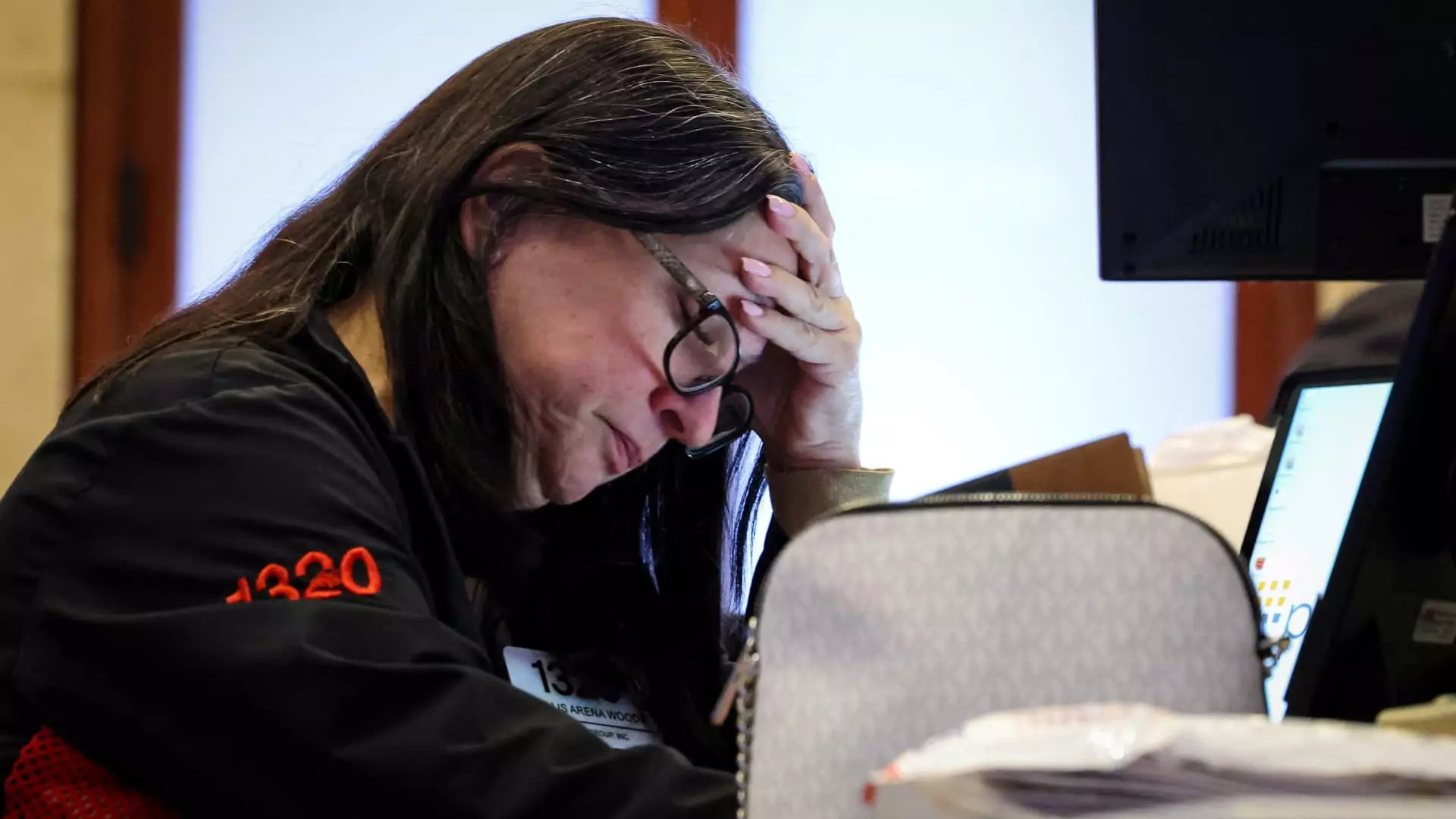The tumult of President Trump’s trade initiatives has sent ripples through the economic landscape, raising grave concerns about a potential stagflation scenario. When Torsten Slok, the chief economist of Apollo Global Management, warns of a bleak economic outlook, he is addressing a pivotal dilemma that could redefine the financial future of the United States: a combination of stagnant growth and rising inflation. As we delve into this complex issue, it becomes increasingly clear that the ramifications of trade tariffs extend beyond mere economics; they touch the very fabric of American prosperity.
When Slok elucidates that the comprehensive list of economic forecasts now largely emphasizes downside risks, he highlights an alarming trend: the more we engage in trade warfare, the more we risk eroding our economic stability. The calculation that U.S. GDP could potentially plummet by 1.5% due to sustained tariffs is more than just a theoretical measure; it’s a powerful indicator of how policy-driven strife can undermine growth and consumer confidence.
The Stock Market’s Volatility: A Testament to Fear
The current trajectory of the stock market provides ample evidence of this fear. Following retaliatory measures from China, the American stock indices took a significant hit, reflecting market uncertainty. A swift decline of almost 6% over consecutive days sent shockwaves through the financial community, marking a foreboding response to what many now view as reckless economic brinkmanship. The dramatic decline, resulting in the S&P 500 plummeting more than 17% from its peak, highlights the volatile interaction between geopolitical maneuvering and investor psychology.
With the Magnificent Seven tech companies losing a staggering $1 trillion in a single day, as pointed out by Slok, it’s hard to overlook that the sectors least insulated from the chaos are the ones that dominate our economy. The concentrated losses in high-profile tech stocks serve as a stark reminder that our economic vitality is often tied to global conditions—conditions that are now threatened by an aggressive trade policy.
Tariffs and Inflation: A Double-Edged Sword
Beyond the immediate market reactions, the scenario grows increasingly complicated with the specter of inflation looming larger. A forecasted increase of 1.5 percentage points in inflation may seem manageable on its own, yet in the context of stagnant GDP, it morphs into a disheartening psychological burden for consumers. Rising costs without corresponding wage growth create an unshakable sense of anxiety for American households, and the purchasing power that once fostered a thriving economy becomes eroded under this dual pressure.
What we must question is: are we prepared to accept a trade regime that promotes price hikes while simultaneously stunting our economic growth? This amalgamation of challenges creates a potent threat to the American Dream, as individuals increasingly find it harder to make ends meet and save for the future.
Investment Risks and Institutional Reactions
Financial institutions are bracing for a fallout of colossal proportions if the current trends continue unabated. Slok suggests that the U.S. stock market could face a whopping $6 trillion decline if the trade war perpetuates, representing not just numbers on a ledger but a jagged blow to investor sentiment and retirement savings alike. Banks and investment firms are keenly aware that confidence is paramount: without it, capital markets falter.
Moreover, the reaction of institutional investors to this turbulent climate further emphasizes a crisis of confidence. If the predominant narrative is one of risk aversion and uncertainty, expect funds to flee to perceived safe havens, exacerbating volatility in more precarious assets. The fear of missing out on potential gains in a stable economy is being replaced by an overwhelming anxiety of being trapped in a bear market—a dramatic turn that shifted the wealth dynamics many investors had hoped to avoid.
A Call for Pragmatic Leadership
As this trade war unfolds, it begs for a prudent approach that transcends political ideologies. The reality is stark: endless bickering over tariff policies does nothing to provide the certainty that consumers and investors are desperately craving. This moment stands as a stark call for leadership that prioritizes sound economic principles over empty bravado; it is time to reassess and consider strategies that genuinely promote growth rather than impeding it.
In essence, the impending consequences of Trump’s volatile trade policies not only threaten stagnation but also pose a direct challenge to our economic ideals. Thus, it is imperative that we advocate for a more constructive discourse in Washington, prioritizing stability, growth, and a return to the economic principles that have historically propelled the United States forward.

